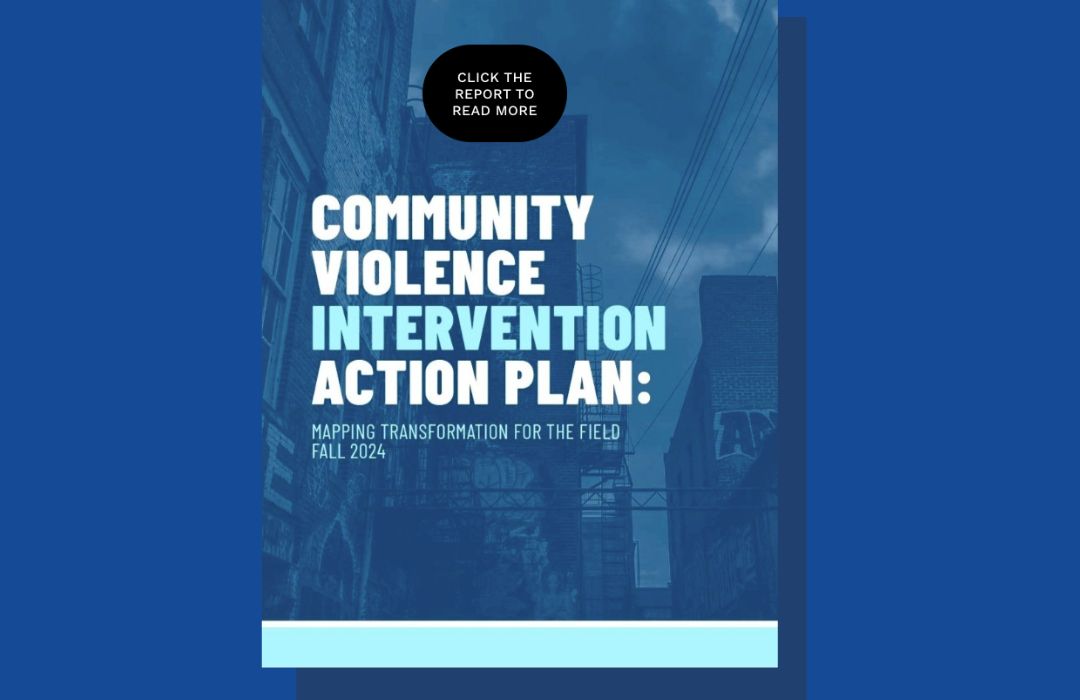Community Violence Intervention: An Introduction
Community Violence Intervention (CVI) is a public health approach to reducing violence through evidence-based, community-centered strategies. Research suggests CVI can be more effective and cost-efficient than traditional law enforcement alone.
CVI programs work with people at high risk of engaging in community violence, which the CDC defines as violence between unrelated individuals, usually outside the home. This includes physical assault, gun violence and gang violence. CVI programs focus on direct intervention through peer-based street outreach, violence interruption, crisis intervention, hospital-based violence intervention, life coaching and peacemaker fellowships. These services prioritize trust-building, emotional and mental health support, and long-term safety and stability for individuals and communities.
Building trusting relationships between CVI service providers and those most affected by violence is crucial to the success of CVI strategies. In communities of color, which often experience disproportionate violence, Black and brown leadership is vital to the CVI field’s ability to save lives, foster true public safety and advance broader criminal justice efforts.
Quote from David Muhammad
CVI strategies are a key component of the public safety ecosystem, working to prevent violence rather than punish people after the fact. Director, National Institute for Criminal Justice Reform (NICJR)
Director, National Institute for Criminal Justice Reform (NICJR)
TRANSFORMING COMMUNITY SAFETY
The U.S. criminal legal and carceral systems operate on the assumption that policing, punishment and imprisonment ensure public safety and health. However, these systems have led to the U.S. having the world’s highest incarceration rates without a proportional increase in community safety. As a result, it has deepened poverty and inequality, particularly for communities of color, reinforcing racial injustice.
CVI plays a promising role in addressing overcriminalization and developing more effective and just pathways to community health and safety. It provides alternative approaches to addressing the root causes of violence and can help break cycles of retaliation between victims and perpetrators of violence.
While CVI strategies complement law enforcement efforts, they do not depend on them. Instead, these efforts center community leadership in strengthening the public safety ecosystem and reducing the size and reach of the existing criminal legal system.

CVI Strategies in Practice
The Coalition to Advance Public Safety (CAPS) is a collaborative effort to reduce gun violence by 10% to 20% over five years in 12 cities at the center of America’s gun violence epidemic. CAPS works to scale and strengthen CVI infrastructure in these communities.
Spearheaded by four Black-led CVI organizations—Cities United (CU), Community Based Public Safety Collective (The Collective), the Health Alliance for Violence Intervention (the HAVI), and National Institute for Criminal Justice Reform (NICJR)—CAPS partners with city leadership and service providers nationwide.
Together, they offer technical assistance, coordination support and funding to strengthen local-level CVI initiatives.
Hear from CAPS Leaders
Listen to five episodes of the Lemonada podcast, Good Things, to hear CAPS leaders share real-time insights on building thriving, sustainable CVI ecosystems in cities across the U.S.

Roundtable Discussion: Stopping Violence Before it Starts
Three CAPS leaders discuss what CVI is and why treating violence as a public health issue is necessary. They also share how they collaborate with each other, local organizations, and governments to reduce violence and heal communities.

Baltimore: Saving Lives Through Hospital-Based Care
Leaders in hospital-based violence intervention discuss the role of health systems in CVI. They explain how hospitals—where victims of violence receive treatment and support—serve as crucial sites for crisis intervention and breaking cycles of violence.

Newark: Saving Lives Through Credible Messagers
A mentor and mentee explore vital parts of the CVI ecosystem, including street outreach and credible-messenger work. They explain how meaningful relationships help prevent crime and how those most affected by violence are uniquely positioned to address it.

Baton Rouge: Saving Lives Through Violence Prevention
Decades of public disinvestment in neighborhoods fuel cycles of violence. This episode explores the high cost of homicides and violence for cities and why investments in public services—including CVI—are far more cost effective than criminalization.

Indianapolis: Saving Lives Through Criminal Justice Reform
CAPS leaders discuss how technical assistance and data help CVI practitioners reach individuals at high risk of committing violence, offering them services that prevent violence and help them break the cycle of reincarceration.
PROGRESS MILESTONE
The CVI Action Plan
Launched in fall 2024, the CVI Action plan is the culmination of meetings where CVI leaders from across the country shared insights about their work and discussed opportunities.
The plan outlines key recommendations for practitioners, donors and policymakers, focusing on:
- Capacity-building;
- Fieldwide collaboration;
- Policy development and advocacy;
- Narrative change;
- Research and evaluation; and
- Standardizing CVI elements.
Endorsed by 115 organizations and 19 individuals, the plan serves as a community-led vision and a comprehensive guide for investing in and scaling CVI efforts nationwide.

Historic Federal Investments in CVI
The field of CVI has grown dramatically in recent years, securing billions in local, state and federal public investments.
The Biden administration created the first federal funding stream for CVI, advancing key legislation and new initiatives to scale CVI efforts. While some programs were time-bound, they set the foundation for sustained investment and progress.
Bipartisan Safer Communities Act
The most comprehensive gun safety legislation in three decades, which appropriated funding for CVI strategies.
American Rescue Plan Act
A COVID-19 relief package that enabled local governments to allocate funds to CVI.
Community Based Violence Intervention and Prevention Initiative
A U.S. Department of Justice effort to coordinate the work of several related government agencies and administer grants to CVI organizations.
White House CVI Collaborative
An 18-month initiative to support a cohort of 16 jurisdictions committed to using public funding to scale and strengthen CVI infrastructure.
Office of Gun Violence Prevention
A federal office run by the Biden White House to coordinate across agencies, support community-based prevention programs and advance policies to reduce gun violence.
LEARN MORE

Our Criminal Justice Grantmaking Portfolio
We support efforts to end mass criminalization, build new pathways to justice and safety, and repair harm caused by the criminal legal system.

Achieving Community-Centered Health and Safety
We invest in efforts led by Black and brown communities to scale effective responses to health and safety needs that do not rely on the criminal legal system.

Organizations Leading the Path Forward
Our grantees lead efforts at the local, state and federal levels to improve the criminal justice system through advocacy, rehabilitation programs, litigation and more.




